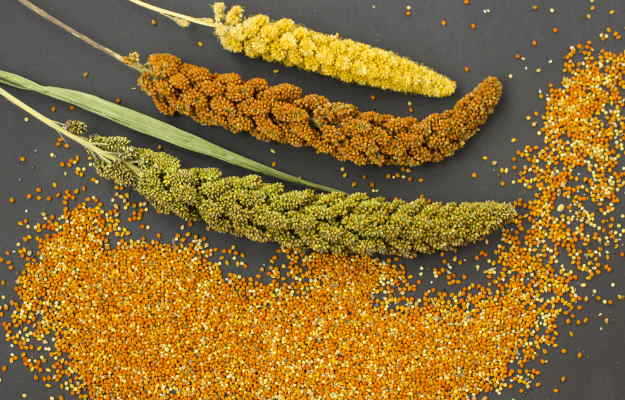There are many grains that are grown across the length and breadth of India and bajra or pearl millet is one of the key types. The western states of India are not only the key producers of bajra but also its key consumers. This whole grain - which may be white, brown, grey or even purple in colour - is now gaining popularity as a healthier alternative to starchy grains like white rice.
Like most grains, bajra is packed with dietary fiber, plant proteins, vitamins, minerals and phytonutrients. In fact, the proteins found in bajra are more potent than those in other grains like maize or corn. This makes it a dietary source of many vital nutrients and an important staple, especially for vegetarians and those who follow a vegan diet. However, bajra also contains high amounts of nitrates, phytic acid and oxalates, which can make its excess consumption bad for your health, especially if you have high blood pressure, malabsorption syndrome or are prone to kidney stones.
Did you know?
The crop bajra is believed to have originated in the Sahel region of Africa and the western part of India. These regions are known for their water scarcity and sandy or dry loamy lands, which makes bajra a key source of nutrition and one of the chief foods grown in these parts. These environmental factors for growth are some of the main reasons why this grain is so packed with nutrients.
Some basic facts about bajra:
- Botanical name: Pennisetum glaucum
- Family: Poaceae
- Common name: Bajra, pearl millets
- Sanskrit name: Priyangu, kandaja
- Parts used: Whole grain
- Native region and geographical distribution: India is the largest producer of bajra in the world. Rajasthan, Maharashtra, Haryana, Uttar Pradesh and Gujarat are key bajra-producing states.
















